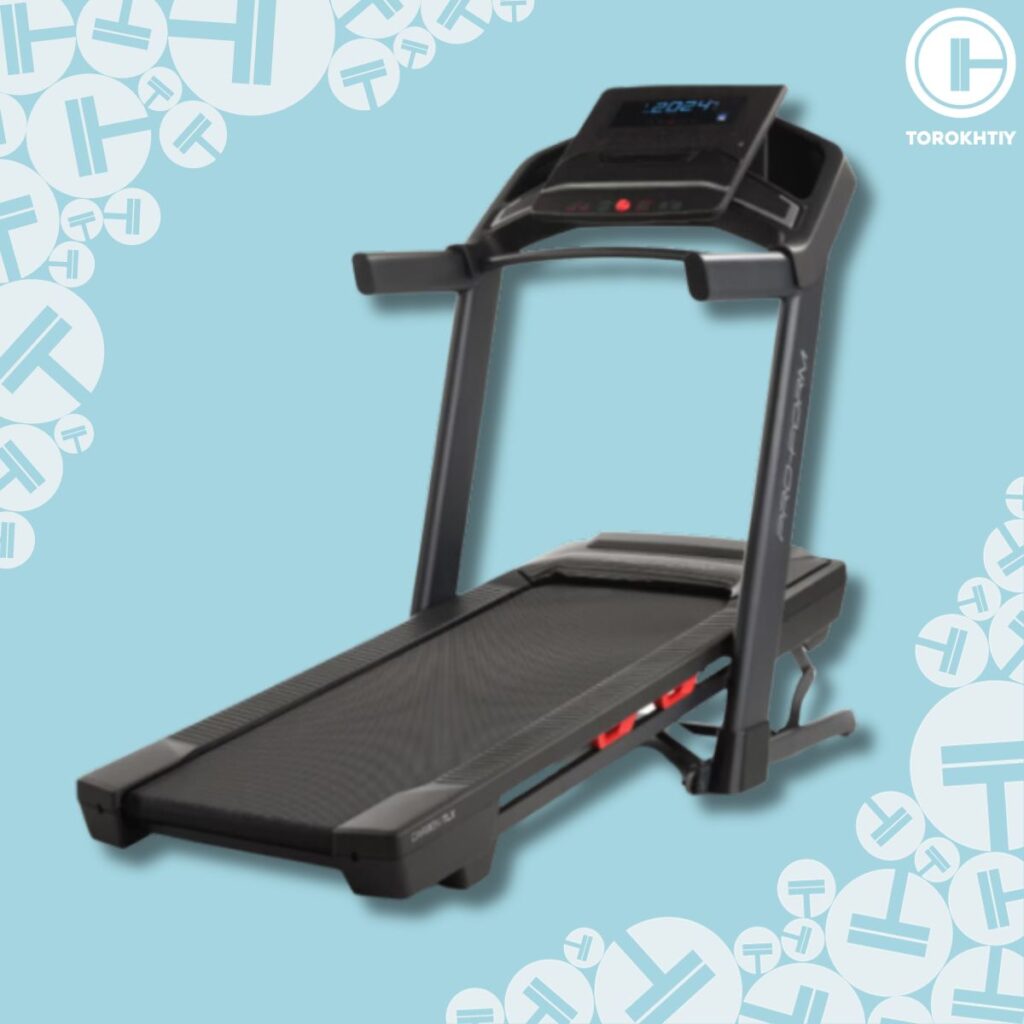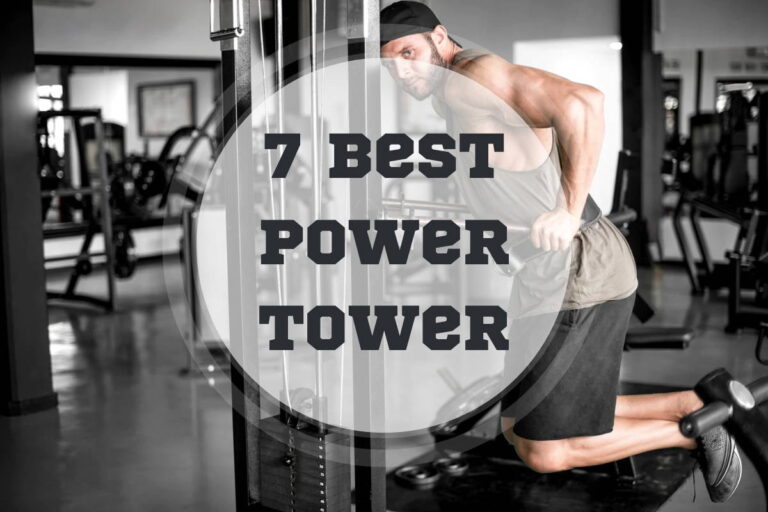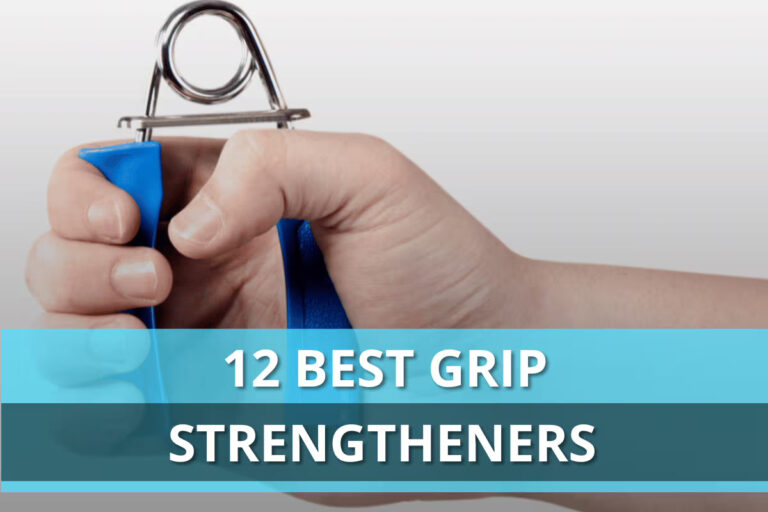How to Use a Treadmill With Full Confidence
Reviewed by: Oleksiy Torokhtiy (21 years of Oly Lifting experience)
Owning a treadmill is a great way to get your daily dose of cardio from the comfort of your own home. If you’ve recently purchased or are considering buying one and are wondering how to use a treadmill, you’ve come to the right place.
In this article, we’ll guide you through everything you need to know about proper treadmill use. From the correct techniques and benefits of treadmill exercise to valuable workout tips, we’ve got you covered. Let’s get into it!
How To Use A Treadmill? Here are our quick notes on how to use a treadmill: Always start with a warmup. Begin slowly and gradually increase speed. Maintain good posture and monitor your heart rate. Use proper workout gear and always have water at the ready. Next up, the full guide on proper treadmill use.
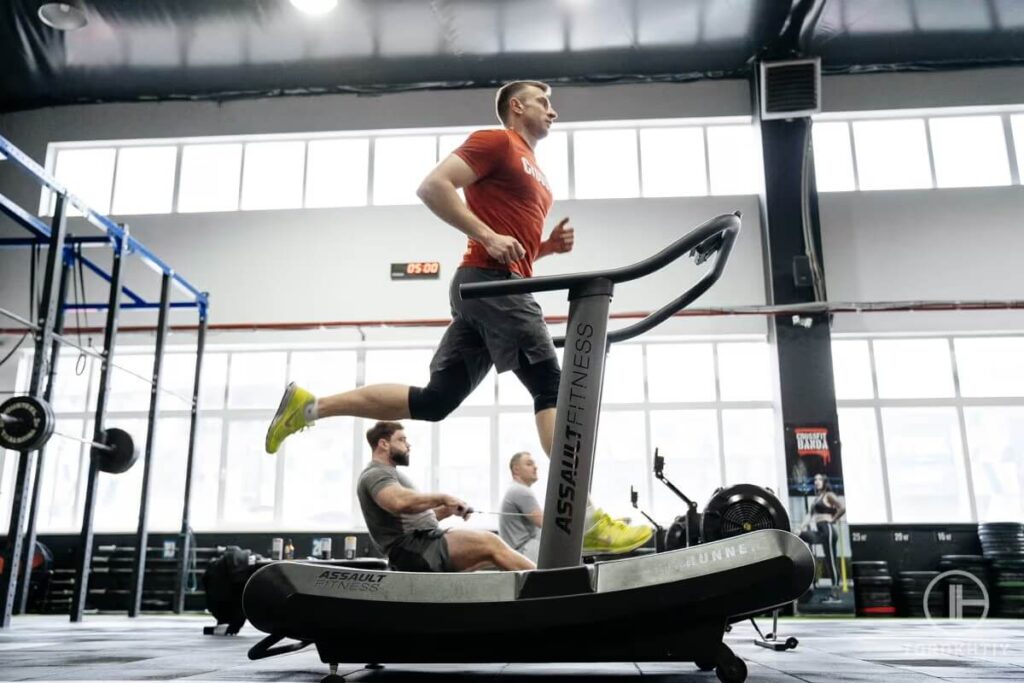
What Is a Treadmill?
A treadmill is a cardio exercise machine that incorporates a moving surface known as a belt, enabling users to simulate walking, jogging, or running while remaining in one place. This exercise variety can help athletes of all levels achieve fitness goals such losing weight, improving cardiovascular health, and perfecting your shape.
So, how does a treadmill work? Based on its power source, a treadmill can either be motorized or manual. A motorized treadmill operates using a built-in motor that drives the belt movement. Motor-powered treadmills typically offer a broad range of speed settings and often include an adjustable incline feature as well, which can be adjusted using the main console. On the other hand, manual or self-propelled treadmills rely on the athlete’s physical input to drive the belt. In the simplest of terms, the faster you walk/run, the faster the belt moves.
Using a treadmill is a great way to stay active and improve cardiovascular fitness. Even better, getting one for yourself can save you the hassle of going to the gym and provide you with the option to work out from the comfort and safety of your home.
How to Use a Treadmill Step by Step?
Whether you’re new to treadmills or a seasoned athlete, there are certain things that should never be overlooked when it comes to your training routine. Knowing how to start a treadmill and knowing how to use it are completely different things. Here are some essential tips on how to properly use a treadmill you should apply every time you go for a workout.
1. Start By Warming Up
Warming up is an absolute must before engaging in any type of workout, not just using a treadmill. Research suggests warmups are highly effective for preventing injuries in the lower extremities, especially in activities that include running. And yet, an alarming amount of people skip them and jump straight into their workout.
Before hopping on your treadmill, it’s crucial to warm up to wake up the muscles, get your blood going, and let your mind enter the “workout” state. Warmups do not have to be over-the-top, 5 to 10 minutes of light stretching, followed by dynamic movements, and some balance and agility drills will do the trick. Finally, you can complete your warmup on the treadmill with a light walk, gradually increasing speed to ease into your workout.
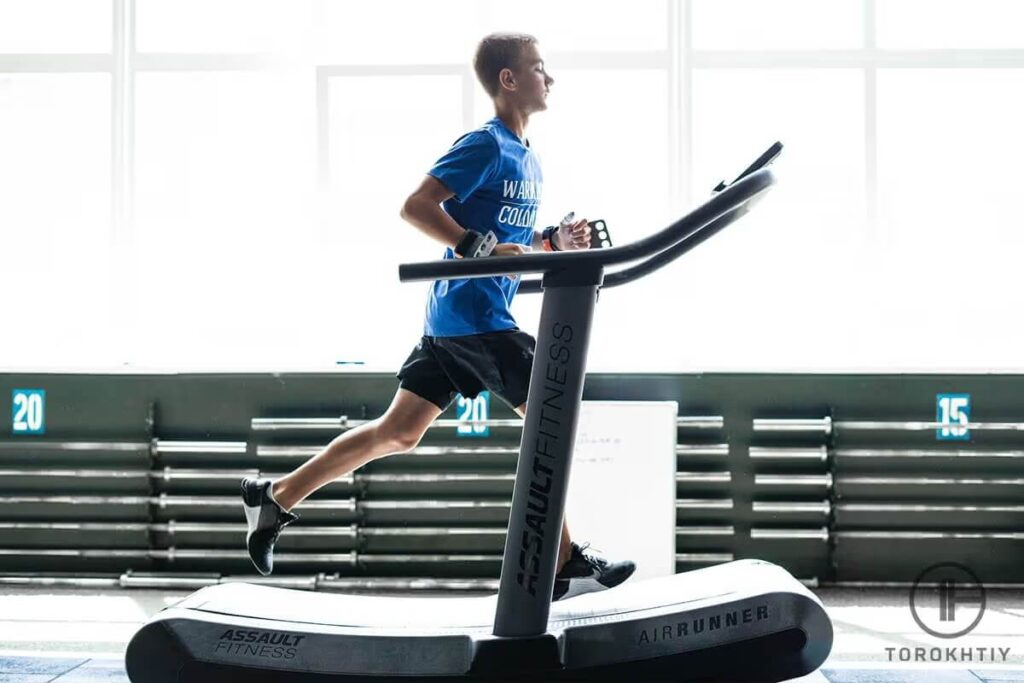
2. Step On/Off Only When The Treadmill Is Stopped
To avoid accidents, it’s essential to step on and off the treadmill only when the belt is not moving. Trying to mount or dismount a moving treadmill can lead to a loss of balance and falls, which can lead to injury.
If you need to make a quick break, most treadmills will have a Pause or Break button that lowers the belt speed until you press “Ready” again. On top of that, each side of the treadmill deck typically has a non-slip cover that you can safely step onto with each foot.
Remember to attach your safety clip AKA safety key somewhere around your waist area, such as to your shirt or shorts. This way, if you happen to fall off or drift too far back, the clip will pull the emergency safety nod and automatically stop the treadmill.
3. Start and Stop Slow
When starting your treadmill workout, begin at a slower pace, slightly lower than your average walking speed. This will allow the treadmill motor to ramp up smoothly and give you time to safely assess for unexpected bumps in the belt. This way, you can ensure that the machine is working well and avoid wear and tear, extending your treadmill’s life cycle.
Moreover, starting slowly gives your body a chance to adjust to the walking or running motion. This allows you to scout for potential injuries or feelings of discomfort without finding yourself in the middle of a run. Do this for about a minute, then you can gradually increase the speed as you start feeling more comfortable and confident.
Finally, it’s very important not to lower the speed drastically or come to a complete stop unless in the case of an emergency. Treadmills work by the platform moving underneath your feet, and a sudden change of speed may not give your body enough time to adjust to the difference in force, which can cause loss of balance, dizziness, and even fainting. Even when you come to the end of your workout, it’s important not to step off immediately for the same reasons. Furthermore, a drastic decrease in speed or sudden stop during a run has a high impact on our body, particularly the joints.
4. Maintain Good Posture and Form
Maintaining proper posture and form is crucial for an effective and safe treadmill workout. A treadmill walk or run should mechanically look the same as a walk or run on solid ground. This means standing tall with your head up and gazing at the front, relaxing the shoulders and arms and letting them swing naturally, engaging your core to maintain an upright posture, and sticking to your natural stride span.
Avoid slouching or leaning forward, as this can reduce exercise economy and performance as well as strain your body, particularly the back. While it may be tempting to hold onto the handrails, try to avoid excessive reliance on them unless you have a specific physical condition that necessitates it. Additionally, when running or walking, land on the middle of your foot rather than striking the belt with your heel. This not only protects your joints, bones, and muscles in your legs but also prevents damage to the treadmill belt. The only exception to this would be using forefoot running when going for maximum speed sprints.
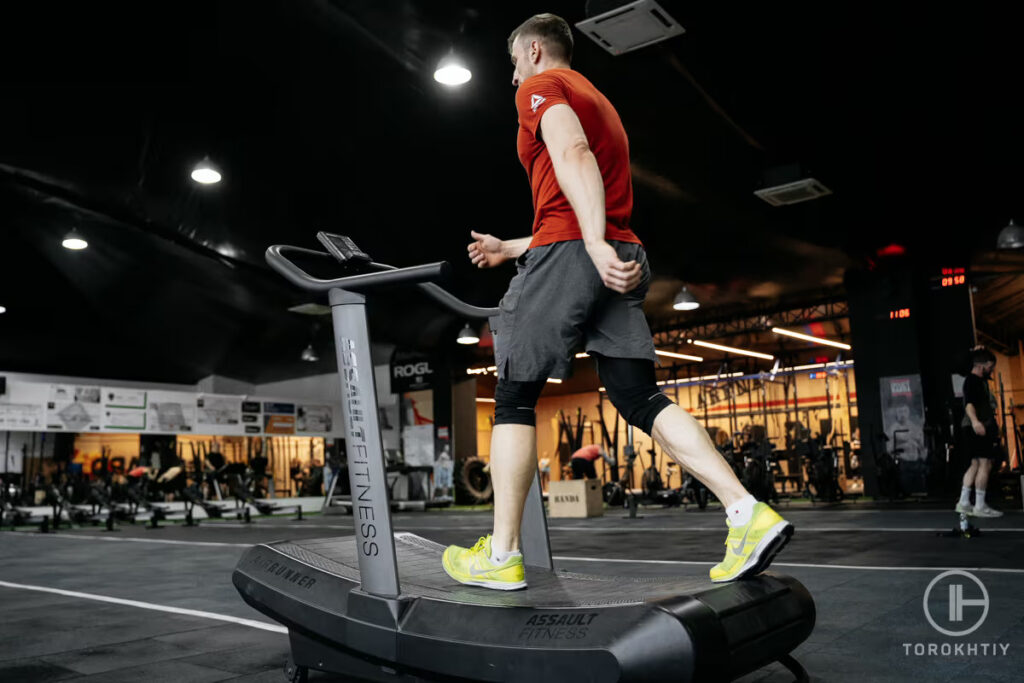
5. Monitor Your Heart Rate
To ensure a safe and efficient workout, it’s essential to monitor your heart rate and exercise intensity. Many treadmills are equipped with built-in heart rate monitors or are compatible with wearable devices that feed this info to the machine.
You want to make sure that you’re hitting your ideal heart rate based on your health. According to research, the ideal heart rate for moderate physical activities is between 64% and 76% of your maximum beats per minute (BPM). For intense activities, this number is between 77% and 93%. To calculate your approximate max BPM, simply subtract your current age from 220.
That said, it’s always a good idea to consult a physical therapist or doctor to get an exact measurement and determine your target heart rate range based on your age, fitness level, and training goals. This will ensure you’re training within optimal conditions for maximal cardiovascular benefits with minimal associated risks.
6. Maintain Your Treadmill
Post-workout care of your machine is essential for its life cycle. Generally, a more expensive treadmill will be lower-maintenance and outlast an affordable one. However, this also comes down to frequency and intensity of use. Typically, you should do full maintenance every 3-6 months, depending on these factors.
You should look to clean the main frame from dust and sweat after every other workout or so based on your observation. Depending on what type of treadmill you purchase, you may need to tighten the bolts and screws, lubricate the rollers, realign the belt, change electrical component batteries, etc. Luckily, you won’t have to guess how, when, and what to do, as all maintenance information should be found in the user manual or warranty.
Tips From the Champ
The ProForm City L6 is a compact and affordable treadmill designed for home use. It utilizes ProForm’s original ProShox™ cushioning to reduce joint impact, resulting in a noticeably more comfortable workout experience. With precision-balanced non-flex rollers, the belt operates smoothly and quietly.
Olympic Weightlifting Champion
Tips for Effective Treadmill Training
Here are some tips that will make your treadmill exercise safer and more comfortable.
1. Train With a Purpose
Whether it’s weight loss, cardiovascular health, or general recreation, working out with a purpose helps you stay focused and driven. Between the speed and incline settings, treadmills offer a wide range of workout possibilities, and many come with built-in workouts to help you get started on your goals quicker.
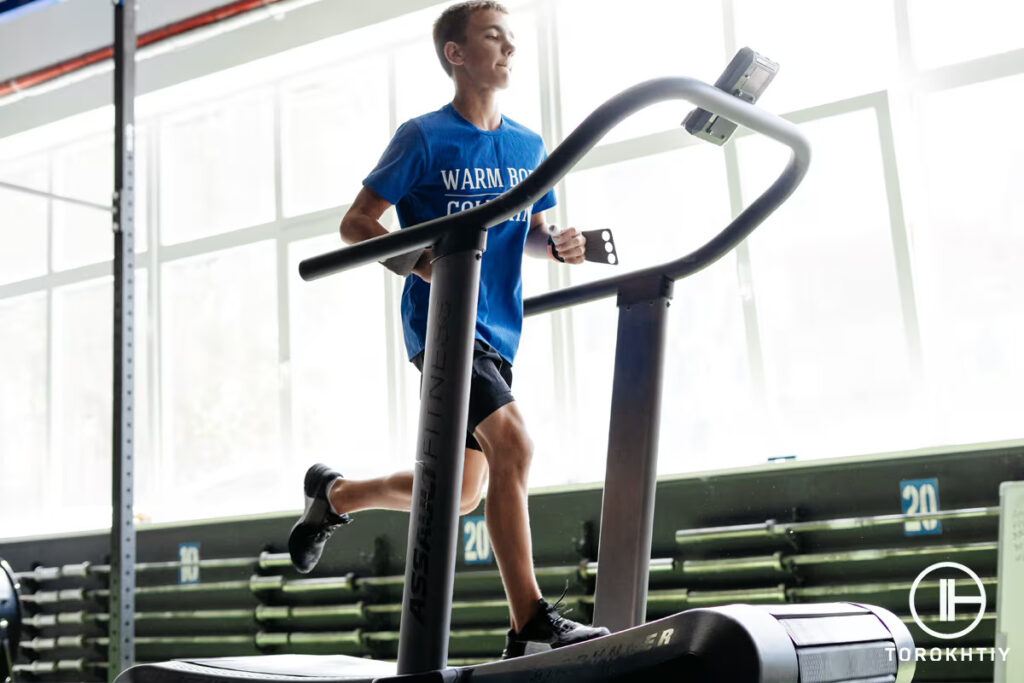
2. Get Proper Training Gear
Wearing proper training gear doesn’t just look and feel cool, it improves your performance and safety during exercise. Getting a pair of proper running shoes will do wonders for you in terms of comfort, stability, and exercise impact, as well as improve your running economy. The type of socks you run in is also relevant. Sport socks are made from moisture-wicking materials that absorb sweat and keep your feet dry. Additionally, they have extra padding around the heel, toe, and sole to make them more comfortable. These features serve to prevent blisters, infections, hot spots, and similar discomfort caused running in inappropriate footwear.
3. Use a Small Incline
When running indoors on a treadmill, the energy expenditure is lower compared to running outdoors due to the absence of air resistance. However, research suggests that using only a 1% incline can compensate for this difference. Additionally, walking on a 3% incline showed significantly increased energy expenditure, as well as greater muscle activation in the calves and glutes, compared to walking on a flat surface.
4. Remember to Hydrate
Remember to drink water before, during, and after your treadmill session, and always have a water bottle at the ready. Proper fluid intake improves both physical and cognitive conditions and helps you continue your workout. Meanwhile, forgetting to hydrate can lead to faster exhaustion and fatigue.
Treadmill We Recommend
The ProForm Carbon TLX is a foldable and affordable treadmill designed for home use. It utilizes ProForm’s original ProShox™ cushioning to reduce joint impact, resulting in a noticeably more comfortable workout experience. With precision-balanced non-flex rollers, the belt operates smoothly and quietly.
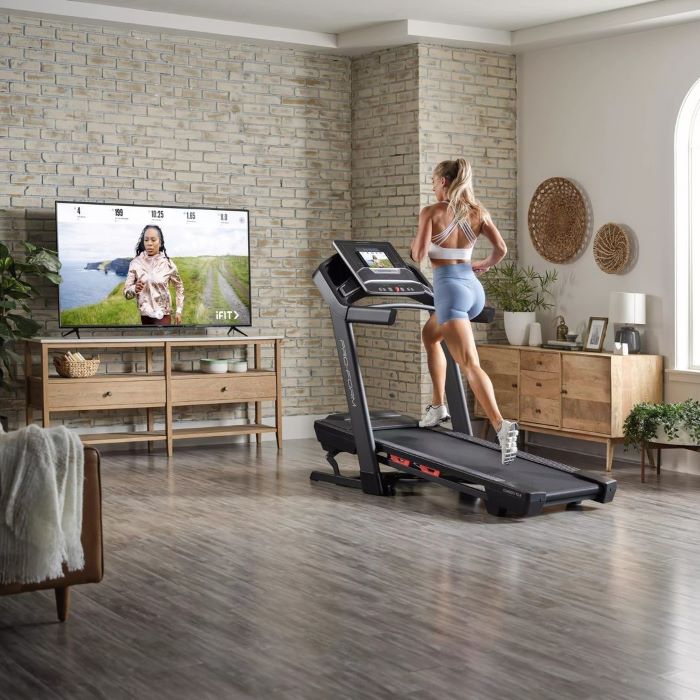
The control console features an intuitive design and an LCD monitor for displaying workout information. Additionally, the Carbon TLX can connect to the iFit app, providing access to a wide range of workouts and detailed progress tracking. When not in use, the treadmill can be folded horizontally for convenient storage.
FAQ
Is A Treadmill Good For Weight Loss?
Yes, treadmills are an excellent choice for weight loss. That said, it’s important to note that just exercising is not enough to lose weight. Burning away calories is done with what’s known as a calorie deficit, meaning you need to spend more calories than you consume through food and drink. Studies have found that there are no significant differences between walking for just 30 minutes versus walking for an hour if on a calorie deficit, suggesting that diet plays a significantly bigger role than the amount of exercise.
Is 1 Hour of Treadmill Enough Exercise?
This entirely depends on your training intervals and intensity level, as well as your fitness goals. In general, the World Health Organization (WHO) recommends at least 150-300 minutes of moderate-intensity or 75-150 minutes of vigorous-intensity exercise per week for adults. In summary, moderate exercises fall between three to six METs (Metabolic Equivalents of a Task), vigorous ones use six or above.
Ideally, this time amount should be spread within 3-4 workout sessions per week, such as every other day, to maintain consistency. If you’re walking on a treadmill, you can utilize the speed and incline setting to progressively increase exercise intensity within the same session.
Conclusion
Using a treadmill is a great way to meet all your cardio needs, including weight loss, endurance training, and muscle development. Between the speed and incline settings, treadmills have some of the highest exercise variety among cardio machines.
Our recommended treadmill model to get the ProForm Carbon TLX. Thanks for reading our guide on how to use a treadmill. Now it’s time to let us know your thoughts:
Do you own or plan on getting a treadmill? Which of our tips did you find most informative?
Let us know by leaving a comment and remember to follow our social media where we post lots of valuable fitness content.
Also read:
- Electric vs Manual Treadmill
- Treadmill vs Recumbent Bike
- Slat Treadmill vs Belt
- Tips for Running on a Treadmill
- Exercise Bike vs Treadmill
- Stairmaster vs Treadmill
- Benefits of Treadmill
- How to Fix a Slipping Treadmill Belt
- Treadmill Maintenance
References:
- Effects of Exercise on the Resting Heart Rate: A Systematic Review and Meta-Analysis of Interventional Studies // Ncbi: https://www.ncbi.nlm.nih.gov/pmc/articles/PMC6306777/
- Training techniques to improve endurance exercise performances // Pubmed: https://pubmed.ncbi.nlm.nih.gov/12076176/
- Systematic Review of the Association Between Physical Fitness and Musculoskeletal Injury Risk: Part 2-Muscular Endurance and Muscular Strength // Pubmed: https://pubmed.ncbi.nlm.nih.gov/28796127/
- Physiological analysis of the 100 km indoor rowing World Record // Efsupit: https://www.efsupit.ro/images/stories/september2018/Art%20227.pdf
Why Trust Us?
With over 20 years in Olympic Weightlifting, our team does its best to provide the audience with ultimate support and meet the needs and requirements of advanced athletes and professional lifters, as well as people who strive to open new opportunities and develop their physical capabilities with us.
By trusting the recommendations of our certified experts in coaching, nutrition, dietology, and sports training programming, as well as scientific consultants, and physiotherapists, we provide you with thorough, well-considered, and scientifically proven content. All the information given in the articles concerning workout programming, separate exercises, and athletic performance, in general, is based on verified data. We ensure that you can rely on our professionals’ pieces of advice and recommendations that can be treated as personalized ones which will benefit you and fully meet your needs.
The product testing process is described in more detail here
Author: Ihor Shymechko
Pro Olympic Weightlifter, Coach
Best Results: Snatch – 208 kg,
C&J – 240 kg
Ihor has been a professional weightlifter since 1996, boasting over two decades of competition experience. His notable achievements include clinching the European Championship in 2009 and securing a silver medal in the 105kg division at the Senior World Championships in 2011. Ihor represented his country in the 2008, 2012, and 2016 Summer Olympics. After retiring from competitive weightlifting, he transitioned to coaching, leveraging his vast experience to guide athletes who now compete on both national and international stages.
Reviewed by: Oleksiy Torokhtiy
Olympic Weightlifting Champion
Best Results: Snatch – 200 kg,
C&J – 240 kg
Oleksiy Torokhtiy is a professional athlete boasting 20 years of experience in Olympic weightlifting. With multiple European and World titles under his belt, he has showcased his prowess in two Olympic Games (Beijing 2008 and London 2012). Upon concluding his illustrious career, Oleksiy dedicated himself to coaching. By 2022, he had conducted over 200 weightlifting seminars worldwide. He is the visionary behind an international sportswear and accessories brand known for its motto, “Warm Body Cold Mind.” Additionally, he is an esteemed author and the creator of a series of training programs and eBooks.


